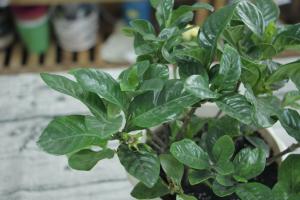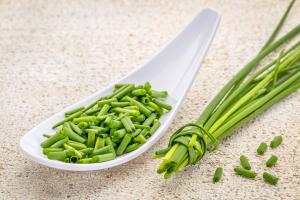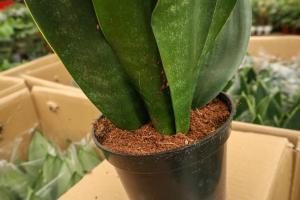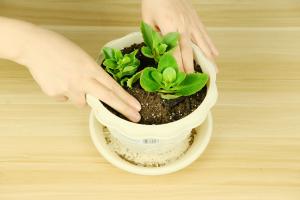Introduction
Tomato plants are a common sight in many gardens, but not all tomato plants are created equal. Some are determinate, meaning they grow to a certain height and then stop, while others are indeterminate, meaning they continue to grow and produce fruit until they are killed by frost. In this article, we will explore what exactly an indeterminate tomato plant is, how they differ from determinate plants, and the benefits and drawbacks of growing them.
What is an Indeterminate Tomato Plant?
Indeterminate tomato plants, also known as vining tomato plants, are plants that continue to grow and produce fruit until they are killed by frost. They do not have a predetermined height and can continue to grow upwards until they reach a support, such as a stake or trellis. Indeterminate tomato plants also tend to produce more fruit than determinate plants, although the fruit may be smaller in size. They are also known for having a longer growing season, which can be beneficial if you live in an area with a longer growing season or want to extend the harvest.
How are Indeterminate Tomatoes Different from Determinate Tomatoes?
Determinate tomato plants, also known as bush tomato plants, grow to a certain height (usually around 3-4 feet) and then stop growing. They tend to produce their fruit all at once, over a period of a few weeks. The fruit tends to be larger in size and the plant has a shorter growing season. Determinate tomatoes are often preferred by commercial growers because they offer a more uniform crop and are easier to harvest, as all the fruit ripens at once.
Indeterminate tomatoes, on the other hand, have a more erratic growth pattern and can continue to grow and produce fruit for the entire growing season. They tend to produce smaller fruit over a longer period of time. They are often preferred by home gardeners who want a longer harvest and don't mind the extra work of staking and supporting the plants.
The Benefits of Growing Indeterminate Tomato Plants
One of the biggest benefits of growing indeterminate tomato plants is their longer harvest season. Because they produce fruit over a longer period of time, you can enjoy fresh tomatoes all summer long (and well into the fall, in some regions). They are also known for producing more fruit than determinate plants, which can be beneficial if you have a large family or want to preserve your harvest through canning or freezing.
Indeterminate tomato plants are also known for their disease resistance. Because they are less compact than determinate plants, they tend to have better air circulation, which can help prevent diseases like blight and powdery mildew. This can save you time and money on fungicides and other treatments.
The Drawbacks of Growing Indeterminate Tomato Plants
While there are many benefits to growing indeterminate tomato plants, there are also some drawbacks. One of the biggest drawbacks is the amount of work required to support the plants. Because they continue to grow upwards, they require staking, cages, or trellising to support them. This can be time-consuming and labor-intensive, especially if you have a lot of plants.
Another potential drawback is their tendency to become "leggy" if not properly pruned. This can lead to fewer fruit and a less productive plant. Lastly, because they have a longer growing season, indeterminate tomato plants may be more susceptible to disease and pest problems.
Conclusion
Indeterminate tomato plants offer a longer harvest season and a greater yield of fruit than determinate plants, but they require more work to support and maintain. They are a great choice for home gardeners who are willing to put in the extra effort to support the plants and enjoy a longer harvest season. If you are considering growing tomatoes, be sure to consider whether indeterminate or determinate plants are best for your growing conditions and gardening goals.

 how many times do yo...
how many times do yo... how many planted tre...
how many planted tre... how many pine trees ...
how many pine trees ... how many pecan trees...
how many pecan trees... how many plants comp...
how many plants comp... how many plants can ...
how many plants can ... how many plants and ...
how many plants and ... how many pepper plan...
how many pepper plan...
































